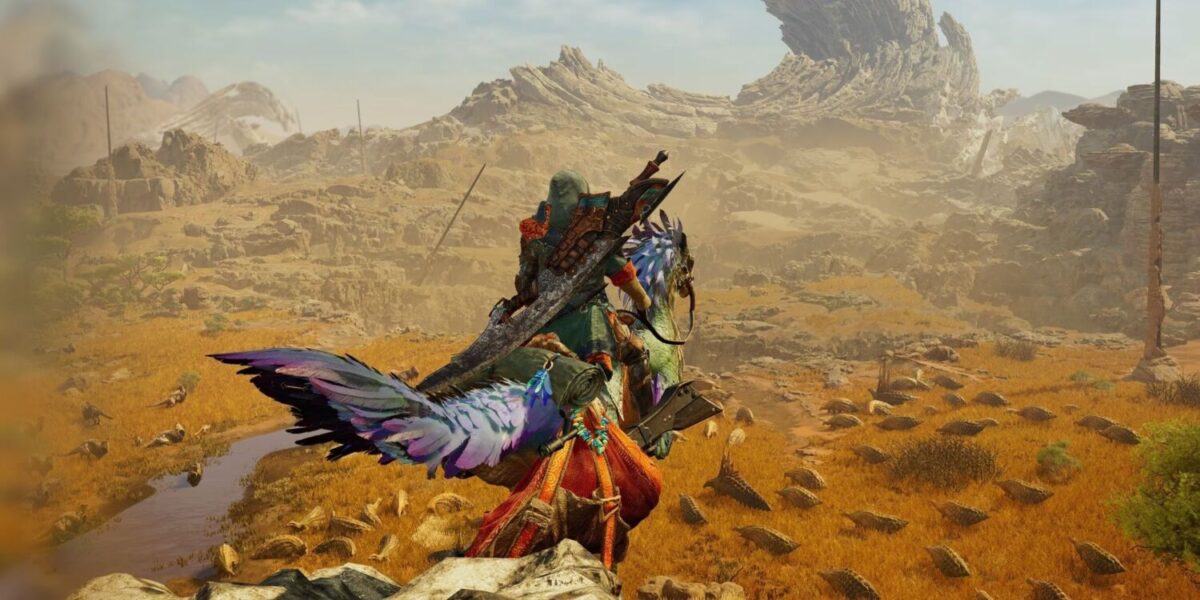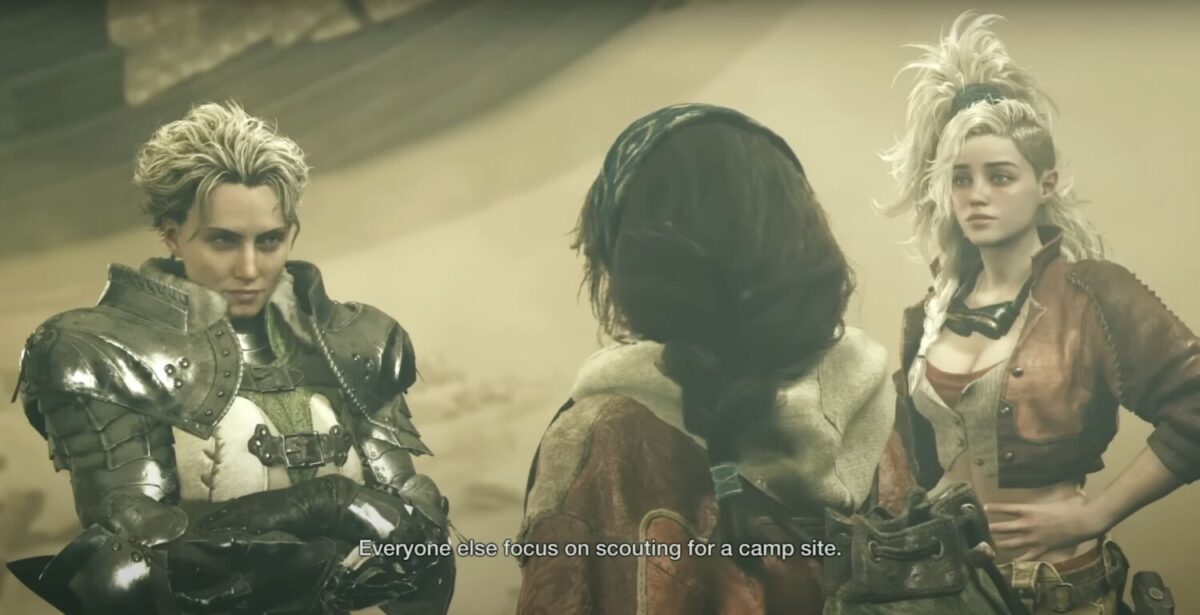On a personal level, the Monster Hunter series has always been more of a miss than a hit. The premise, reflected fully in its name, has a steep learning curve and its rewards-based gameplay can be frustrating for some. It’s blasphemy, some may cry, and they wouldn’t be wrong – with over 100 million units sold worldwide (as of May 2024) and an enthusiastic, dedicated following, the influence of Capcom’s beloved series cannot be understated.

Much of the charm stems from the core gameplay loop, but the rinse-and-repeat grind doesn’t resonate with everyone, requiring time and effort to understand and get into the pace of things. Imagine the surprise when a 20-or-so-minute demo of Monster Hunter Wilds at Tokyo Game Show (TGS) 2024 proved a lot more enjoyable than expected, presenting a convincing and strong argument to finally join the hunt.
Taking after its predecessor, 2018’s Monster Hunter: World, the highly-anticipated sequel builds on several familiar elements and is set in the Forbidden Lands, an unpopulated locale filled with beasts to kill. There seems to be more narrative involvement here, if the opening of the preview is anything to go by, revealing a lengthy cutscene that highlights two things: a new region of the map is now accessible, and a team of explorers are starting an expedition to hunt down a monster long thought to be extinct (in true Monster Hunter fashion).

It transitions seamlessly into the tutorial segment, as players stumble upon a young girl being pursued by several worm-like creatures and help fend off the threat. The slinger makes a welcome return here, allowing crafted or collected pods to be flung at enemies, while the attached grapple hook unlocks the ability to snag items from a distance. All of this is done atop a Seikret mount, which can either be controlled manually or auto-piloted towards the current objective.
After the chase sequence, the girl introduces herself as Nona and enlists their aid to locate her missing brother Y’sai, with the voice-acting – a series’ first for the player character and Palico companions – making it easier to immerse into the story. Before starting the rescue mission, a weapon needs to be equipped, and Monster Hunter Wilds offers the same 14 weapon types as before, from the lance to insect sword. A nice touch about the selection process is being able to ask for recommendations, which proves handy for newcomers.

With dual blades in hand, it’s time to kill some beasts. Travelling through the sand-filled, gritty landscape yielded a sense of freedom, reinforcing the game’s first foray into the open-world genre. There aren’t many unique sights to check out, but the enhanced visual fidelity is prominent, conveyed through swirling dust and other effects.
Indeed, the upcoming romp is a graphical spectacle. As expected from a title developed on the RE Engine, Capcom’s internal game engine used for Street Fighter 6, Monster Hunter Rise, and more, it delivers crisp cinematic presentation and more intricate environmental design amid occasional dips in the frame rate, both during and outside of exploration.

Soon enough, players will find a Chatacabra, a hardy, spiky beast with a massive tongue standing in the way and attacking an injured Y’sai. Unleashing the dual blades in combat brought immense satisfaction, with each strike packing a fluid and dynamic touch. The Demon and Archdemon modes make a return as well, granting a boost to damage output and showcasing some sleek combo attacks, whirlwind style.
The biggest change in Monster Hunter Wilds, though, is the Focus Strike move set, which highlights a monster’s weak points and allows them to be exploited. Damage them enough to form wounds, and a red glow will appear, opening a window of opportunity to deal more blows and trigger a brief cinematic attack that knocks the enemy over. From there on, it’s all about following up with some extra hits, getting drops, and chasing the Chatacabra when it flees to its next haunt.

Depending on where the creature is, there may be other ways of causing damage without directly attacking it. A cave setting, for instance, lets Bowgun wielders (sorry, melee fighters) shoot stalactites from the ceiling, causing them to drop on enemies and introducing more gameplay variety into the mix. Fortunately, the speedy and fleet-footed Seikret makes it easy to chase targets down, and the auto-navigation feature is another point in its favour.
While riding the mount, players will be able to sharpen their weapon, use items, attack creatures, and launch aerial assaults along the way, offering a welcome touch of convenience. Putting the slinger to use proved to be a smooth, fuss-free affair, with the transition between exploration and combat feeling more natural and seamless.
Monster Hunter Wilds also inherits the SOS flare system from its predecessor, but it was difficult to gauge its effectiveness in the preview. Activating the feature brings three support hunters, either live or computer-controlled, into the middle of a hunt, offering a nifty helpline for solo players who require extra aid for stronger critters. However, the prompt only showed up near the end of the boss fight, which was already manageable as part of the tutorial, raising questions about NPC behaviour like their coordination efficiency or the duration of their presence.

Due to limited playtime and trial slots, there wasn’t a chance to try out the other demo, which would have introduced Alpha Doshaguma, a colossal bison-like monster, the ability to wield a second weapon while mounted, and its dynamic weather conditions and ecosystem. Still, the brief 20 minutes presented a tantalising tease of a world that never impressed in the way it ever did others, showcasing enthralling combat and an enticing open world. Perhaps it’s time to finally become a Monster Hunter convert.
Monster Hunter Wilds releases 28 February 2025 for the PlayStation 5, Xbox Series X|S, and PC.













